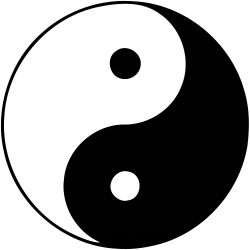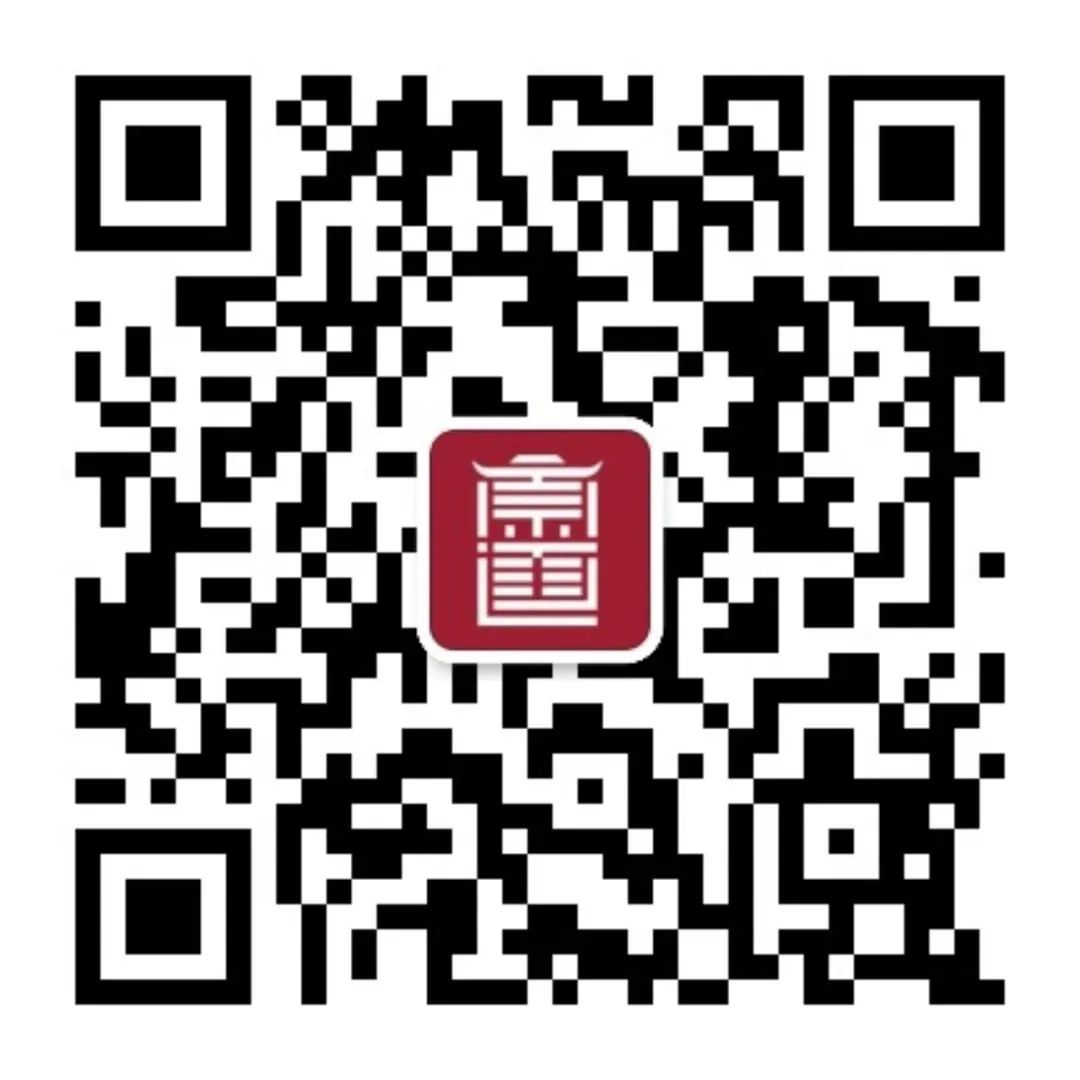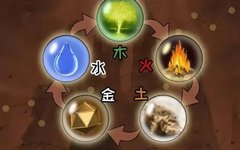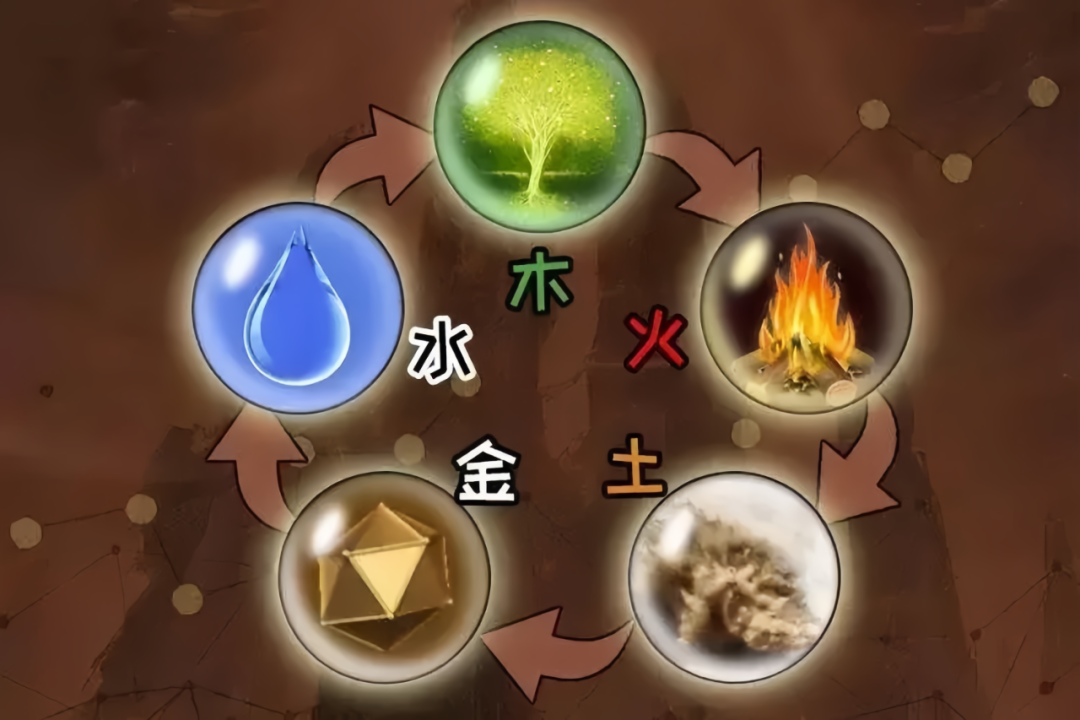
In this complex world, every individual is unique, possessing distinct personality traits and life trajectories.
In ancient Chinese metaphysics, the theory of the Five Elements reveals the mysterious and profound connection between personality and destiny.
By understanding your Five Element attributes, you may gain clearer self-awareness, leverage your strengths, avoid weaknesses, and move towards a better life.
Today, let us unveil the secrets of the Eight Characters and explore how the Five Element attributes determine your personality trajectory!
Basic Theory of the Five Elements: The Mysteries of Heaven and Earth

1. Definition of the Five Elements
The Five Elements, namely Metal (金), Wood (木), Water (水), Fire (火), and Earth (土), are fundamental concepts in ancient Chinese philosophy.
They not only abstractly summarize the five basic forms of matter in nature but also reflect the interdependent relationships of all things in the universe.
The theory of the Five Elements posits that all phenomena and objects in the universe can be reduced to the movements and transformations of these five basic elements.
2. The Generating and Overcoming Relationships of the Five Elements
There exists a generating and overcoming relationship among the Five Elements, which is the core content of the Five Element theory.
Generating means Metal generates Water, Water generates Wood, Wood generates Fire, Fire generates Earth, and Earth generates Metal, forming a cyclical chain; overcoming means Metal overcomes Wood, Wood overcomes Earth, Earth overcomes Water, Water overcomes Fire, and Fire overcomes Metal, constituting a mutually restrictive balance system.
This generating and overcoming relationship reflects the harmonious coexistence of nature and reveals the inherent laws of development.
Human Five Element Attributes: The Secrets of the Birth Chart
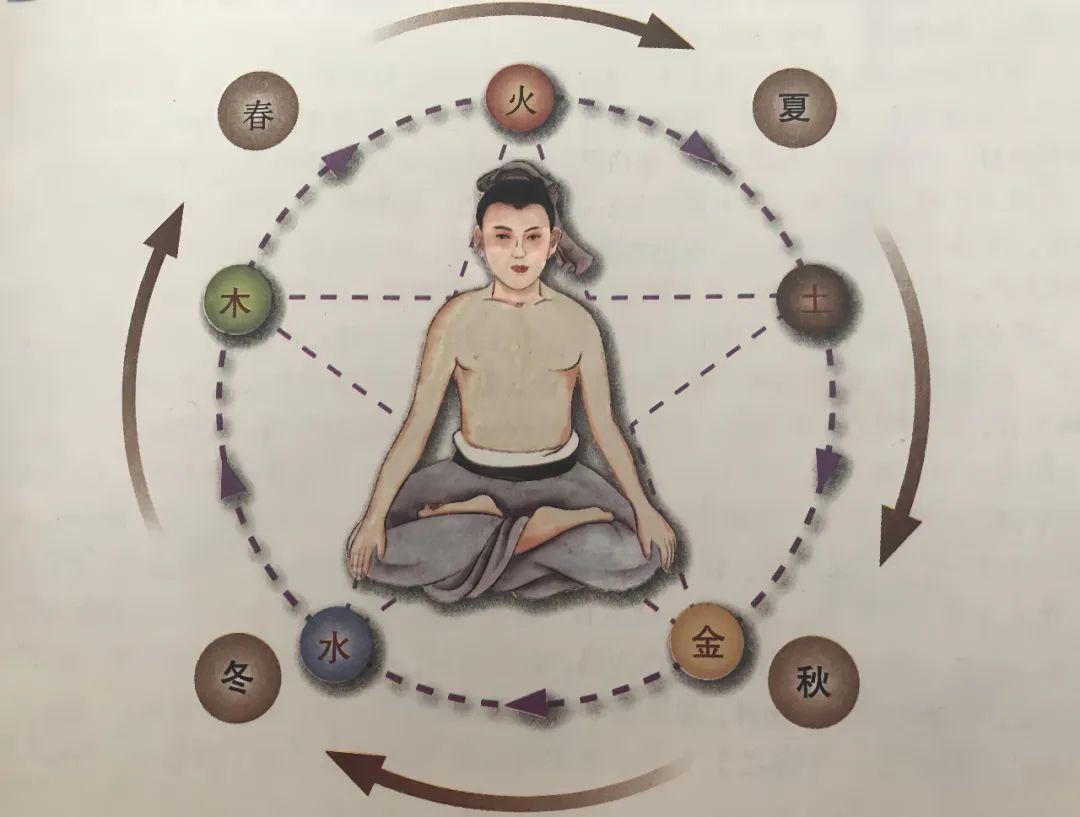
1. Concept of the Birth Chart
The Birth Chart, abbreviated as the Eight Characters, is an important tool in traditional Chinese metaphysics used to calculate an individual’s destiny.
It is based on the year, month, day, and hour of a person’s birth, forming eight characters through the combination of Heavenly Stems (天干) and Earthly Branches (地支), known as the “Eight Characters of Birth”.
These eight characters contain information about a person’s fortune, career, marriage, and family throughout their life.
2. The Four Pillars and Heavenly Stems and Earthly Branches
The Birth Chart consists of four pillars, each containing one Heavenly Stem and one Earthly Branch.
There are ten Heavenly Stems: Jia (甲), Yi (乙), Bing (丙), Ding (丁), Wu (戊), Ji (己), Geng (庚), Xin (辛), Ren (壬), and Gui (癸); and twelve Earthly Branches: Zi (子), Chou (丑), Yin (寅), Mao (卯), Chen (辰), Si (巳), Wu (午), Wei (未), Shen (申), You (酉), Xu (戌), and Hai (亥).
The combination of Heavenly Stems and Earthly Branches reflects the passage of time and embodies the Yin-Yang and Five Element energies of the universe.
3. Day Stem and Corresponding Five Element Attributes
In the Birth Chart, the Day Stem (the Heavenly Stem of the birth date) is crucial for determining a person’s Five Element attributes.
Based on the Day Stem, individuals can be classified into five types: Metal, Wood, Water, Fire, and Earth.
For example, those with a Day Stem of Geng (庚) or Xin (辛) belong to the Metal attribute; those with Jia (甲) or Yi (乙) belong to the Wood attribute; those with Ren (壬) or Gui (癸) belong to the Water attribute; those with Bing (丙) or Ding (丁) belong to the Fire attribute; and those with Wu (戊) or Ji (己) belong to the Earth attribute.
Characteristics of the Five Element Personalities: The Secrets of Character

1. Characteristics of Metal Attribute Individuals
Metal attribute individuals are typically decisive, have a strong sense of justice and responsibility, and are very loyal to friends and family.
However, they can also be impatient, lacking in attention to detail, and may make impulsive decisions.
2. Characteristics of Wood Attribute Individuals
Wood attribute individuals are gentle and amiable, good listeners, and possess a strong sense of justice and compassion, always willing to speak up for the weak.
However, they can also be stubborn, lacking flexibility and compromise, which may lead to interpersonal conflicts.
3. Characteristics of Water Attribute Individuals
Water attribute individuals are intelligent, resourceful, observant, and capable of adapting quickly to changes, often having good interpersonal relationships due to their communication skills.
However, they may also be indecisive and miss opportunities at critical moments.
4. Characteristics of Fire Attribute Individuals
Fire attribute individuals are enthusiastic, optimistic, and full of energy, polite and considerate, and good at making new friends.
They often possess strong leadership skills and can inspire others’ enthusiasm and creativity.
However, they may also act impulsively, lacking patience and careful thought, leading to mistakes due to rash actions.
5. Characteristics of Earth Attribute Individuals
Earth attribute individuals are honest and simple, keep their promises, and have a strong sense of responsibility and mission. They are grateful and always remember those who have helped them.
However, they may also be stubborn, lacking flexibility and innovation, which can lead to difficulties in a rapidly changing society.
Application of the Five Elements in Life: Personal Growth and Improvement
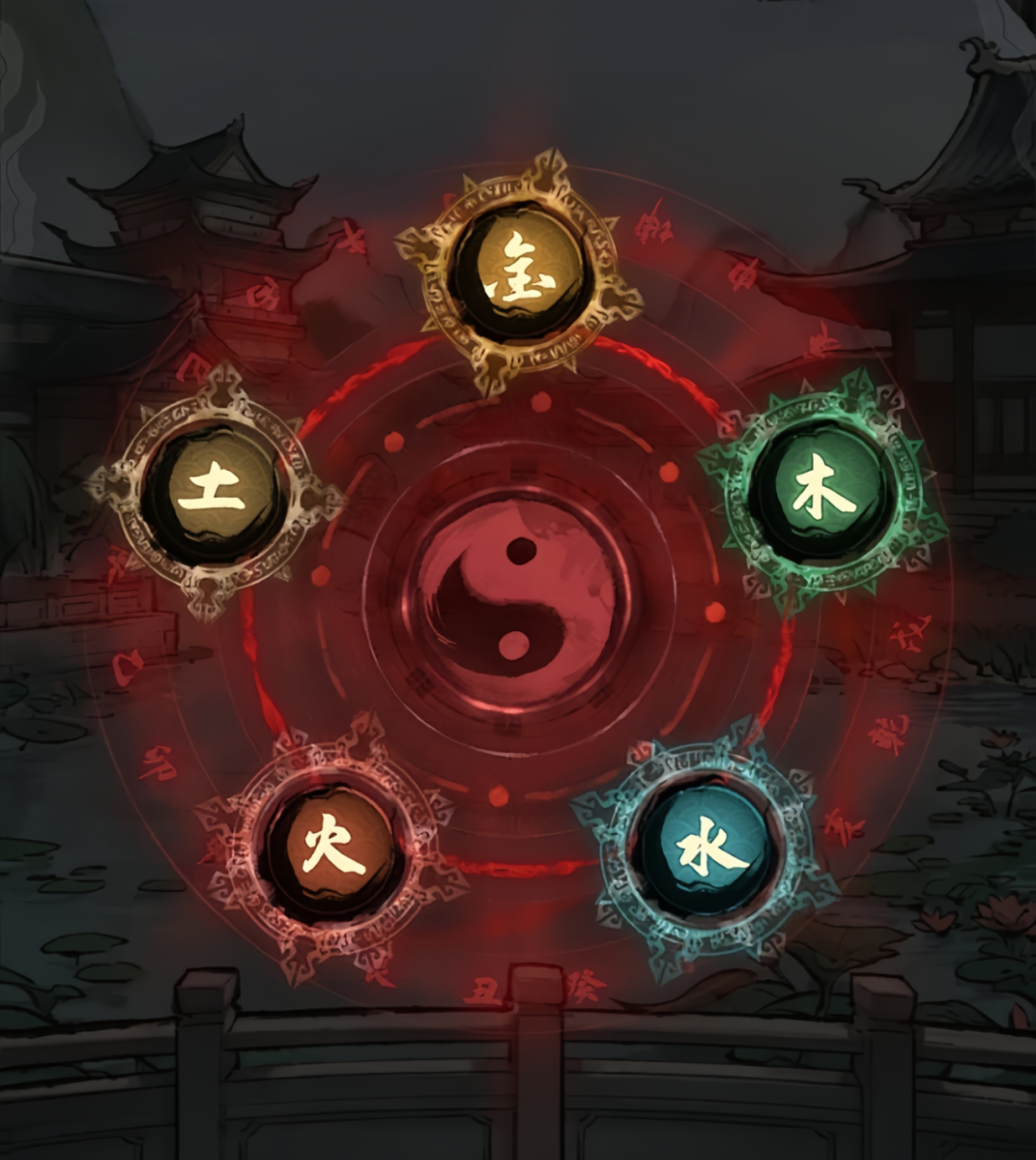
By understanding your Five Element attributes, you can better recognize yourself, leverage your strengths, and improve your weaknesses.
Here are some specific application suggestions:
1. Leverage Strengths and Avoid Weaknesses
Identify your strengths and weaknesses based on your Five Element attributes.
In life and work, try to maximize your strengths while minimizing your weaknesses.
For example, Metal attribute individuals can focus on cultivating patience and attention to detail; Wood attribute individuals can learn to be more flexible and adaptable; Water attribute individuals can enhance their decisiveness and execution; Fire attribute individuals can practice calm thinking and patient listening; Earth attribute individuals can develop innovation and flexibility.
2. Utilize Advantages
Find suitable careers and development directions based on your Five Element attributes.
For example, Metal attribute individuals are suited for careers in finance and law that require rigorous thinking and decisiveness;
Wood attribute individuals are suited for careers in education and healthcare that require compassion and responsibility;
Water attribute individuals are suited for planning and marketing careers that require intelligence and creativity;
Fire attribute individuals are suited for sales and performing arts that require enthusiasm and energy;
Earth attribute individuals are suited for careers in construction and agriculture that require patience and perseverance.
3. Improve Weaknesses
Develop specific improvement plans targeting your weaknesses based on your Five Element attributes.
For example, Metal attribute individuals can cultivate patience and attention to detail through reading and meditation;
Wood attribute individuals can enhance their interpersonal skills through learning communication techniques and teamwork methods;
Water attribute individuals can improve their execution by setting clear goals and plans;
Fire attribute individuals can learn emotional management and calm thinking methods to control impulsiveness;
Earth attribute individuals can cultivate innovation and flexibility by embracing new ideas and trying new methods.
4. Personal Growth and Improvement
By understanding your Five Element attributes, you can gain clearer self-awareness, define your personality traits, and growth direction.
Through continuous learning and practice, you can refine your personality and enhance your overall qualities and abilities.
In summary, the Five Element attributes, as an important component of traditional Chinese metaphysics, reveal the mysterious and profound connection between personality and destiny. By understanding your Five Element attributes, you can better recognize yourself, leverage your strengths, improve your weaknesses, and achieve personal growth and improvement.
Connecting with the “Dao” for Future Religious Innovation (Human Harmonious Coexistence) – A Preliminary Exploration
First, it is important to clarify that humanity faces a common flaw of “conceptual fixation”—when a concept is artificially set, it limits understanding and practice to that concept, missing the complete understanding of the truth and natural principles, and failing to effectively solve practical problems.
Thus, when dealing with concepts, one should adhere to the principles of “grounding in the original, focusing on connotation, keeping pace with the times, dynamic change, solving problems, and seeking truth from facts”. The concepts of “religion” and “Daoism” are such, and based on Daoist thought—where the Great Dao connects, a preliminary exploration of future religious innovation (human harmonious coexistence) is conducted, reflecting the inherent characteristics of the “Dao” itself—”its greatness has no outside, its smallness has no inside, and it is omnipresent”—and the innovative view of religion as “inheriting tradition, keeping pace with the times, and survival as the foundation” is briefly described as follows:
1. Science and democracy are products of historical progress, while harmony and freedom are humanity’s eternal pursuits. However, in today’s history, humanity faces significant issues: human encroachment on nature, material desires corrupting the spirit, diverse political systems, and chaotic beliefs… leading to a disconnection between science and humanity, democracy being merely nominal, and harmony being unestablished, with rampant alienation of freedom… All problems of human existence can superficially be seen as “heaven’s anger and people’s grievances”, but in essence, they are “spiritual calamities”.
2. Religion seeks to explore the truth of the universe, life, and society—only by playing the guiding role of religion in the spirit, resolving and comforting the spirit—educating the spirit, inspiring wisdom, encouraging freedom, restraining indulgence, eliminating ignorance, and saving arrogance, can it coordinate and unify with various social functions such as politics and law, promoting the construction of a human-divine co-governance, which is the ultimate way out for human society. However, both the connotation and form of religion need to be inherited and innovated simultaneously, keeping pace with the times, to reflect the unity of humanity and science, spirit and matter, belief and cultivation, wisdom and morality, governance and world peace, while dialectically handling the relationship between religious “education” and “church” and their correspondence with society, the state, and nations, seeking and striving to achieve the free existence of humanity.
3. “Human-divine co-governance” differs from the historical narrow sense of religion dominating politics, which is a unity based on belief, cultivation, and order management—grounded in a holistic view of nature, which is both a principle, a method, and a goal, establishing a balance between spiritual purity and secular needs, achieving harmony between humanity, society, and nature. In other words, it is based on the collective wisdom of humanity, the divine, and nature to solve human flaws, realizing a series of social goals such as belief, cultivation, morality, conscience, law, order, democracy, and checks and balances.
4. Whether for individuals or social groups, only by balancing the “heaven, earth, and humanity” can “human-divine co-governance” be achieved—”heavenly principles” represent the cultivation of the spirit (heart nature) in accordance with the natural principles, “earthly principles” represent the historical traditions of different regions, nations, and cultures, and “human principles” represent the current secular needs of society. Following the unity of the three principles allows humanity to establish a balance between meeting secular needs and saving the soul.
5. Facing the common flaws of human nature—”conceptual fixation, biased generalization, excessive desires, depletion of vital energy, and inconsistency between words and actions”—humanity must adhere to the unity of the three principles, making choices and balances between truth and falsehood, justice and evil—cultivating the original and solidifying the essence, promoting righteousness and eliminating evil, benefiting humanity, and reducing disasters, reflecting the virtue of heaven in nurturing life.
6. Currently, the problems and accumulated issues of religion and humanity are deep-rooted, and only through “diversity and unity” can these problems be solved. The chaos of diverse thoughts—how to achieve “unity” in the era of “hundred schools of thought contending”? Only by the “Dao” of the universe connecting heaven and earth, connecting all things, and breaking through conceptual fixation, extracting the essence—implementing innovation can humanity’s civilization inherit and blend today’s achievements—respecting the individual of life, the “diversity” of civilizations and religions, while allowing the individual of life, civilizations, and religions to return to (adhere to) the same great truth, and achieve “unity” within a certain range of nations, states, or communities. Otherwise, standing on their own positions and serving their own interests will only lead to chaos in ideology and social order.
7. Innovation lies in application. Application depends on suitability. Suitability is grounded in reality, understanding the great principles, inheriting history, blending civilizations, pioneering and advancing, and solving current and future human existence problems effectively and relatively perfectly.
8. Daoism regards the “Dao” of the universe as the highest faith and educational basis. The “Dao”, as the origin of all things, is not only a conceptual existence of ideology but also an objective independent existence that transcends ideology—its former existence cannot truly reflect the latter, and the reality of human problems requires constant adjustment, supplementation, and perfection. Therefore, “Daoism”, as an objective independent existence in real life, is far greater than conceptual existence and should not be bound and limited by concepts, but should be based on real experiences and current conditions, making adjustments, supplements, and improvements based on historical traditions.
9. Daoism is the education that the ancestors of China imparted to their descendants (the descendants of the dragon), including narrow Daoism—having specific doctrines, regulations, rituals, and organizational nature, and broad Daoism—having the nature of national and ideological education for the entire populace. Historical facts prove that Daoism originated from ancient Chinese civilization, forming the entire history of Chinese civilization’s “Dao lineage” from the creation of heaven and earth by Pangu to the Three Sovereigns and Five Emperors—this is precisely the practice, understanding, and education of the early ancestors of the Chinese nation regarding the unity of heaven and humanity, which formed and maintained the vast civilization of China. If one departs from the existence of both narrow and broad Daoism, the Chinese nation and civilization will cease to exist. Thus, the complete and true concept of Daoism differs fundamentally from the so-called “atheism” and the concepts of sociologists, as the former believes that Daoism was directly established and evolved through direct communication between the early ancestors of China and the divine, while the latter narrowly believes it was founded by Zhang Daoling and is a product of human ideology, leading to a fragmented understanding of Daoism.
10. All religions, human ethnic groups, and all things in the universe exist based on the “Dao”—to exist is to be born, to go against it is to perish. The essence of the “Dao” possesses the balanced unity of the two relative attributes of “Yin” and “Yang”—simultaneously embodying the unity of matter, energy, and information (spirituality), creating and generating all things, manifesting as the supreme of the universe. Different religions, human ethnic groups, and all things in the universe refer to it by different names based on their different understandings, such as “Pangu, Pangu Laozu, Hongjun Laozu, Xuantiang Laozu, Huangtian Laozu, Yuantian Zhenren, Tianzhen Huangren, Wujilaozu, Wujilaomu, Wuliang Tianzun, Zushi Ye, Laotian Ye, Tiandi, Shangdi, Zhenzhu”, etc., all of which imply the “creator of the universe, the supreme deity”—wise and compassionate, dignified and generous, possessing supreme power, revered by both humans and gods. Humanity believes in it, communicating with its energy and wisdom, praying for peace, and achieving the ultimate value of spiritual return, which is equivalent to pursuing and adhering to the natural great principles—upholding true knowledge and charity (following natural laws), countering ignorance and baseness (violating natural laws), reflecting the unity of faith and cultivation, science and humanity, and embodying universal values of education and salvation for humanity.
11. Daoism has a unique and systematic understanding of the primordial true energy, believing that it not only nurtures the initial life of Pangu but also plays a leading role in the “creation of heaven and earth”, referred to as “pre-heavenly primordial energy”. The “Dao De Jing” describes it as “One”: heaven obtains one to be clear, earth obtains one to be peaceful, spirit obtains one to be spiritual, valleys obtain one to be full… the sage embraces one as a model for the world… After the generation of heaven and earth, the Yin and Yang energies combine to form the “post-heavenly primordial energy”, described as “Three” in the “Dao De Jing”, possessing the original energy and information that gives birth to all living things, referred to as “soul”—the soul’s primordial energy belongs to the “post-heaven” relative to the universe, but belongs to the “pre-heaven” relative to the physical body. At the same time, the physical body is conceived from the combined primordial energy (fertilized egg) of the Yin and Yang essences of the parents—both types of “primordial energy” are considered “pre-heaven” for the living body, jointly constituting the essential existence and organic operation of the living body with energy and wisdom. However, most living beings lose their tranquil hearts, do not recognize the essence of life and cultivation, and only know how to use the primordial energy without knowing how to conserve or nurture it, leading to physical and mental exhaustion, ignorance, and suffering. Another part of living beings maintains a tranquil mindset, where tranquility balances Yin and Yang in accordance with the characteristics of primordial energy, allowing the primordial energy to be conserved and nurtured, enabling the living body to obtain the necessary energy and information (spirituality, wisdom) for operation. Thus, the cultivation aimed at enhancing the energy and information of the soul is called “cultivating the true”, and reaching a certain level is referred to as “understanding the Dao” or “achieving the Dao”, with the sufficiency of energy reflecting the level of “Dao practice”.
12. Human wars and conflicts occur not only within the same religion and civilization but also between different religions and civilizations, reflecting humanity’s limitations and sadness in understanding and practicing the absolute eternal “Great Dao” truth, while also reflecting that what humanity understands and practices can only ever be relative truth—that is, no religion, human ethnic group, or all things in the universe can represent absolute truth, only the supreme of the universe can represent it, but it is hidden in the formless, never directly manifesting in the world, only spreading civilization through messengers, forming relative truths. Therefore, sincere faith, humility, and cultivation of the “Dao” will become a common task for all humanity, bringing together theism, atheism, and various religious beliefs and practitioners: sharing the same root, connecting through the primordial energy, sensing the formless (Great Dao), and practicing the tangible, overcoming the small self, seeking commonality in diversity, and jointly pursuing the greatest welfare of harmonious existence.
13. Religion exists as a coexistence of “human and divine”—based on the principle of “Yin and Yang mutually rooted, corresponding and coexisting”, human inspiration reflects the divine; the nature of the divine corresponds to the nature of humanity. The manifestation of human and divine represents the “Yin” and “Yang” forms of the same life entity. Due to the differences in the forms of “Yin” and “Yang”, humans and the divine communicate through “spiritual inspiration”, which is a reflection of the individual’s soul and is related to the individual’s “Dao practice”—the ability to genuinely reflect the “Dao” only represents the understanding of the individual. Thus, the divine is both an objective independent existence and a reflection of human ideology—humans are divine, and the divine is human, with humans and the divine being both independent and unified, dialectically expressed as the divine governing humans, and humans embodying the divine. It can be said that the civilization and wisdom of a person or a nation represent the power and wisdom of their divine—on a global scale, the divine is not an eternal and unique concept, but has ethnic, religious, and historical characteristics. The divine of different religious beliefs has direct civilizational origins with different ethnicities or certain bloodline connections. At the same time, it reflects that the complex historical process of human civilization corresponds to the complex historical process of the divine—there is a general correspondence between the divine realm and the human realm. In other words, although humans and the divine have different “ideologies” and “modes of existence”, they both adhere to the same “Great Dao” truth—only the “Great Dao” is eternal, and humans and the divine connect through the “Dao”, adhering together.
14. On a global scale, it can be said that myths or religious theologies give birth to a nation, or that a nation without myths or religious theologies lacks the vitality of inheritance! What is worth being proud of is that only China has the myth of “Pangu creating heaven and earth” or Daoist theology that possesses thoughtfulness, logic, and systematic completeness, reflecting the high understanding of the origin of the world (universe) by Chinese civilization, becoming the only civilization in the world that has never been severed. Therefore, whether the Chinese nation reveres Pangu as the “root ancestor of China” or as the “supreme deity”, it has historical evidence of “boundless power and supreme wisdom”, allowing the Chinese nation to stand tall in the East of the world with self-respect, self-strength, self-confidence, self-pride, self-blame, and self-motivation. Thus, the Daoist thought of “cultivating the original and solidifying the essence, promoting righteousness and eliminating evil, being independent and peaceful coexistence, being self-centered and utilizing the external, combining the original and the use, and harmonious coexistence” is referred to as “moral civilization”—not only does it directly transform the truth of the “Dao” into productive forces of science and cultural arts, but it also directly determines social harmony and progressive development through the practice of humanity, striving to achieve the free existence of humanity and establishing a model of human civilization.
15. Objectively speaking, how life on Earth, including humanity, was born and the exact time of its birth is difficult to verify today. In other words, there is insufficient reason to conclude that humanity is the original and eternal life of the Earth—or the spirit of all things. However, it can be concluded that humanity is the result of the survival of the fittest among many lives that once dominated the Earth—”to align with the Dao is to live, to go against the Dao is to perish”—reflecting the creation of all things by the supreme deity and the selection of different lives that comply with its will to dominate the Earth. Thus, it can be said that only after the birth of humanity did the personified supreme deity exist. If humanity goes against the will of the supreme deity, other lives will inevitably replace humanity as the dominators of the Earth based on the principles and methods of the Dao, leading to either the extinction of humanity or allowing other lives to dominate and enslave them—this is both the will of the supreme deity and the choice of the Great Dao.
16. According to the law of conservation of energy, if humanity cannot survive on Earth, the soul must inevitably transform to other times and spaces. How does this transformation occur? Those with low energy and wisdom will transform to Earth, dominated by other lives (evil spirits and animals). This is not an exaggeration; in real life, there are numerous examples of “evil spirits” harming humanity—various mental illnesses, stubborn diseases, and epidemics abound. However, as long as humanity dominates the Earth, such instances are relatively rare. Another example is tyrants in human history, who, apart from their own evil deeds, are often influenced by “evil spirits”, causing widespread calamities for humanity. Only by enhancing the energy (primordial energy) of the soul and wisdom can one find a way to transfer to a suitable living space outside of Earth. Thus, the existence of humanity must have an end; there is no absolute eternity, and the only significant meaning of human existence lies in meeting secular needs to achieve the elevation of the soul, relatively realizing freedom of body and mind.
17. Essentially, the calamities of humanity can be attributed to spiritual (soul) calamities, depletion of vital energy, and the inability to return, falling into the suffering of “evil energy” invasion, which cannot be avoided without the salvation of the supreme deity represented by the divine and self-cultivation. Therefore, the value and significance of humanity’s sincere faith in the supreme deity (and the divine realm) lie in the way humanity obtains the original energy (primordial true energy) shared by both humans and the divine through the “return of the spirit—tranquility” to cultivate the necessary energy and wisdom for life. Subsequently, humanity continues to maintain the tranquility of the spirit characterized by “Yin and Yang balance” with the primordial energy, enhancing moral quality. The saying “humans are not far from the Dao, and the Dao is not far from humans” aims to achieve “I exist, all beings also exist; I am free, all beings are also free”, thus realizing a virtuous cycle of human existence (harmonious order). This reflects the unity of (religious) faith and (primordial energy) cultivation, specifically manifested as the divine educating, inspiring wisdom, maintaining natural tranquility, restraining desires, resolving hatred, and promoting forgiveness and love…
18. Regarding righteousness and evil—the cycle of heavenly principles, there is no absolute existence in the universe—”righteousness and evil” are merely conceptual divisions and relative existences, with righteousness containing evil and evil containing righteousness, symbolizing the internal factors and external manifestations of the natural laws of growth, transformation, decline, and extinction of life or things, and they mutually transform, playing an important role in the existence of life or the operation of things—modern science proves the simultaneous existence of “positive and negative” matter. For living beings, righteousness and evil have internal and external distinctions. Due to the inherent natural law of life that “there must be birth and extinction”, evil energy usually overcomes righteousness to varying degrees, with evil energy dominating, hence the saying “nine out of ten are evil”. This is something that no life, including humans and the divine, can completely reverse. Only by utilizing the subjective initiative of humans and the divine to cultivate and supplement the primordial energy can there be a relative improvement—when the energy of humans and the divine is sufficient, it represents their “Dao practice” or “power” being profound, meaning that the primordial energy that creates all things and possesses the inherent balance of “purity” is relatively greater than the total energy and spirituality of internal and external evil (energy), allowing righteousness to temporarily overcome evil, i.e., righteousness rises and evil declines, enabling the living body to experience relative freedom. Thus, even the divine, let alone humans, can only achieve relative and lasting freedom of body and mind by cultivating primordial energy and transcending “righteousness and evil”, thereby escaping or delaying the reincarnation of righteousness (divine) into evil (demonic).
19. Religion plays an important and positive role in human existence. However, it cannot be denied that (due to human flaws) humanity inevitably encounters issues of “believing without seeking truth, being impractical in belief, and lacking comprehensiveness in belief” during the process of religious faith—issues of superstition and religious alienation. In other words, superstition and alienation are not the essence of religion, but rather unavoidable byproducts of the generation, dissemination, and belief processes of religion—wherever there is true faith, there will inevitably be superstition; wherever there is orthodoxy, there will inevitably be alienation. Religion will inevitably have certain imperfections and numerous examples that tarnish its reputation, or it may become detached from the essence of “education”, existing only in the external form of “church”, leading to the emergence of “pseudo-religions” or imperfect religions, or developing to the opposite of religion, resulting in so-called “cults”—characterized by “spiritual opium”—deceptive and pseudo-scientific traits that greatly harm human faith and emotional needs. Thus, every religion in the world has two major factions or attributes: “orthodox” and “heretical”, as referred to in the Chinese mythological work “Fengshen Yanyi” as “teaching of expounding” and “teaching of intercepting”—this is not a specific religious term, but a relative concept of the two major attributes of religion itself, with the core issue being whether to adhere to the truth of the Great Dao.
20. Religion represents different regional civilizations and relative truths. The main reason for conflicts among world religions lies in the fragmented understanding and authoritarianism regarding the supreme belief (universe)—”only my faith is the true deity, only my faith is the highest”. At the same time, it is precisely due to the situation of “turning the guest into the host” during the process of communication and dissemination that intensifies and provokes religious conflicts.
21. No religion in the world (which only represents regional civilization and relative truth) can independently solve world problems. The harmonious coexistence of world religions lies in adhering to moral civilization: cultivating the original and solidifying the essence, promoting righteousness and eliminating evil, being independent and peaceful coexistence, being self-centered and utilizing the external, combining the original and the use, and harmonious coexistence—reflecting the inevitability and necessity of humanity being born from the same “Great Dao” and the harmonious coexistence of world religions.
22. The “teaching of expounding” faction of world religions needs to engage in communication and cooperation, and when conditions are ripe, hold a “World Religious Conference to Promote the Spirit of the Great Dao, Establish Religious Orthodoxy, and Seek Human Welfare”, taking on the leading responsibility for the harmonious coexistence of world religions.
23. Religious believers unify faith and cultivation, communicate with the divine, and merge with the primordial energy, pursuing freedom while being free at all times, eliminating ignorance while being ignorant at all times—forever being humble believers and cultivators of the “Dao”.
I hope this article helps you gain a deeper understanding of your Five Element attributes, providing beneficial guidance and inspiration for your life path!
Author: Starry Astrology Chronicles


•2024 Year of the Wood Dragon: Detailed Analysis of the Zodiac Fortune! Come and see how your Dragon Year fortune is!
• Metaphysics: What is Robbery Wealth? Is having Robbery Wealth in the Eight Characters good or bad?
• Metaphysics: The impact and importance of mixed officials and killing in the Eight Characters!
• Metaphysics: The relationship between “Annual Stars” and “Minor Limits” and human destiny!
• Understanding the cosmic laws of life from the I Ching’s pre-heavenly diagram, the Great Dao is simple, and all laws return to one!
• Metaphysics: How to distinguish the quality of Eight Character destiny, detailed explanation of the characteristics of upper, middle, and lower quality Eight Characters!
• Principles of Eight Character destiny, several key points of fortune-telling, being able to apply flexibly can lead to accurate predictions!
• The application of I Ching numerical hexagrams in daily life!
• Quickly learn “Qimen Dunjia”: judge auspicious and inauspicious without seeking help!
